Faye L. Booth's Blog
November 5, 2012
Trades of the Flesh goes a-wandering
Thanks to the generosity of Tor, who publish the American editions of
Trades of the Flesh
, I have for some time been in possession of a box of US paperbacks while I tried to think of something interesting to do with them. A giveaway, of course, but I wanted to do something a bit different to the draw I had last time (in which five signed copies were given away, specially customised with smutty limericks from the Victorian porn mag The Pearl), and I've spent a while thinking about how to make this giveaway stand out.
What I came up with was this: these copies are not going to be won so much as released into the wild, free to wander and be picked up by random passers-by (much like the book's protagonist, Lydia). Obviously this will mean that they can only be deposited in locations I'm likely to be passing, but that was part of the reason why I decided to do things this way: Lancashire and its environs are such a huge part of my writing, and I wanted to give something back, so to speak, in thanks for the inspiration. The released copies will be signed and dated, and will also contain a sticker explaining how they came to be sitting around by themselves somewhere in the north west. Needless to say, the book's contents are not suitable for children or the easily offended, but that may well be equally true of a book you might find accidentally abandoned on a train, or in Starbucks' book exchange boxes, so parental vigilance is required as it always is in life.
I'm just waiting for the stickers to be printed and then the releases will begin - if you'd like some hints as to where you might find a copy, follow me on Twitter @fayelbooth, and bear in mind these general hints which will probably inform my release locations:
I'm addicted to Starbucks and Costa, but I never set foot in McDonald's, KFC and the like. (I do like pizza, though.)Lancashire weather being what it is - especially at this time of year - it would be unwise for me to leave anything made of paper outside.I haunt bookshops, but it would be unnecessarily confusing for me to leave books which can be picked up for free in a place where books are sold. I don't think the shop owners would thank me, either.I like old buildings.I can't drive.Happy hunting, fellow northerners!
What I came up with was this: these copies are not going to be won so much as released into the wild, free to wander and be picked up by random passers-by (much like the book's protagonist, Lydia). Obviously this will mean that they can only be deposited in locations I'm likely to be passing, but that was part of the reason why I decided to do things this way: Lancashire and its environs are such a huge part of my writing, and I wanted to give something back, so to speak, in thanks for the inspiration. The released copies will be signed and dated, and will also contain a sticker explaining how they came to be sitting around by themselves somewhere in the north west. Needless to say, the book's contents are not suitable for children or the easily offended, but that may well be equally true of a book you might find accidentally abandoned on a train, or in Starbucks' book exchange boxes, so parental vigilance is required as it always is in life.
I'm just waiting for the stickers to be printed and then the releases will begin - if you'd like some hints as to where you might find a copy, follow me on Twitter @fayelbooth, and bear in mind these general hints which will probably inform my release locations:
I'm addicted to Starbucks and Costa, but I never set foot in McDonald's, KFC and the like. (I do like pizza, though.)Lancashire weather being what it is - especially at this time of year - it would be unwise for me to leave anything made of paper outside.I haunt bookshops, but it would be unnecessarily confusing for me to leave books which can be picked up for free in a place where books are sold. I don't think the shop owners would thank me, either.I like old buildings.I can't drive.Happy hunting, fellow northerners!
Published on November 05, 2012 03:45
August 9, 2012
Two short stories on Ether
Having abandoned the Android experiment in favour of iPhone, I have discovered that two of my short stories are now available on the Ether Quick Reads app for just 69p each! The stories in question are Shadows, a modern (gasp!) retelling of a well-known tale which isn't quite so modern; and The Quietness, which is a sinister amalgamation of the Victorian underworld and my admiration for Alan Bennett's Talking Heads monologues. The Ether app is free for iPhone, iPad and iPod Touch, and an Android version is in the works - you can sign up to be notified of its release above.
Published on August 09, 2012 04:45
July 13, 2012
Proofreading and copy-editing
For those of you who were unaware, as well as being a novelist I'm also a qualified proofreader and copy-editor, and the new website for my my freelance editorial services is now live. So anyone who needs any assistance with a manuscript, newsletter, dissertation, leaflet, prepared piece of website text, collection of computer presentation slides or anything else, please check it out for more information!
Published on July 13, 2012 07:01
January 7, 2012
Fact and fiction
It's Fiona Robyn's week as guest editor on She Writes, and both have been kind enough to allow me to contribute something on my major professional learning experience of 2011, which was the challenge of writing about real people and events. It's a hefty responsibility and one I wanted to do my best to uphold, and you can read a few on my thoughts on the subject here.
Published on January 07, 2012 15:57
November 28, 2011
Guest interview with Laura Wilkinson
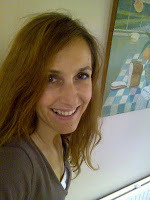 Laura Wilkinson will be known to many of you as one of the brains behind hagsharlotsheroines, the website which showcased and promoted the work of many female novelists. But she's also a writer herself, and her powerful debut BloodMining was recently published and is available now. I picked Laura's brains about genealogy, the plague and visions of the future...
Laura Wilkinson will be known to many of you as one of the brains behind hagsharlotsheroines, the website which showcased and promoted the work of many female novelists. But she's also a writer herself, and her powerful debut BloodMining was recently published and is available now. I picked Laura's brains about genealogy, the plague and visions of the future...FLB: BloodMining is set in the near future. Perhaps inevitably given that I also work with time periods other than our current one, I'm particularly interested in the worldbuilding element, so how did you approach the task of constructing Elizabeth's section of the story (which is - scarily, once you've read the book! - just a handful of years ahead as I write these words), and Megan's which is the next generation on? The technology, I noticed, is a recognisable but more advanced version of our own (I'm picturing a mulmed as something resembling a cross between a tablet and a smartphone; and I was amused to note mention of laws restricting paper use, so perhaps it's fitting that I read the book on an e-reader, as I assume most people in Megan's time would!); but how did you go about determining the state of world events and how they would affect the characters and plot?
LW: The finished, published story is not told chronologically, but I did, in fact, write Elizabeth's section first. Given that this projects only a few years into the future I didn't feel the need to build a vastly different alternative world. After the cataclysmic event of 2015, on an emotional level things have altered beyond recognition for many people, while the external world remains much the same in many respects. There are no destroyed buildings or vegetation as there would be after war or environmental catastrophe for example. But of course, a world with far fewer people, especially the young and the old, would feel very different, leaving aside the ransacked shops, empty schools and care homes. I looked at footage of villages and towns deserted or abandoned because of conflict or famine, and the film I am Legend was great for inspiration too. This kind of loss, followed by such uncertainty, and quiet, would affect characters deeply – Elizabeth is crushed initially, whereas Hannah demonstrates great resilience (and selfishness) in the way that she bounces back. And this imagined disaster allows unaffected nations and unscrupulous people to profit from others' tragedies, and bury pretty despicable actions for many, many years, the aftershocks of which reverberate for generations.
For Megan's sections, which project further into the future I determined the state of my world by preying on our current anxieties. So: Christian Muslim relations are fragile, with the West's dominance much reduced; China is the undisputed super power with scant regard for environmental protection laws; a nanny state is omnipresent with 'population protection laws' controlling how much alcohol people can consume legally and so forth. Megan and Jack are friends, in part, because they rebel against such controls, because they believe in the pursuit of truth. And, I hope, there are some positives in this future world. The environment is treated with more respect for example and people are more co-operative, even if it is forced upon them by poverty!
FLB: Genealogy and the complexities of family relationships are necessarily explored as Megan examines her line of descent in the name of finding a compatible donor to save her son Cerdic, who is born with a terminal and inherited illness. In the 'DVD extras' at the back of the book, you discuss your own experiences with your genes and background. Megan and Cerdic's story is an example of one of the positives that can come from researching one's genealogy - what, in your view, is the flipside to this? How could researching one's family tree - adopted, donor or not - go wrong? How could Megan's attempts have backfired?
LW: The flipside? Good question, I've not considered this till now. Finding out one of your parents is a mass murderer? Adopted, donor or biological I imagine this would be devastating news. Meeting one's biological parents/parent might be a source of disappointment (leaving aside killers for a while)… you might find you have little if anything in common, that you share vastly different and opposing values. In BloodMining Megan never discovers for certain whether or not Owen is her biological father. She does learn he was a pretty unsavoury character, however. If she found out for sure I wonder what she would have made of this? How would it have made her feel? Another possible outcome is one that is explored a little in the book itself, and I don't want to say too much in case there are readers who have not read it yet.
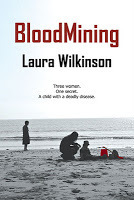 FLB: You use recognisable names for your characters, which I rather liked (super-futuristic sci-fi names can be quite offputting, I find), but of course trends in given names do change. Was it a conscious effort to stick with names your readers would be familiar with?
FLB: You use recognisable names for your characters, which I rather liked (super-futuristic sci-fi names can be quite offputting, I find), but of course trends in given names do change. Was it a conscious effort to stick with names your readers would be familiar with?LW: Yes, because like you I find super-futuristic names off-putting; I didn't set out to write sci-fi (and don't view the novel that way myself) – serious names for serious literature says it neatly, if not one hundred per cent accurately (Ursula Le Guin, anyone?) – and all the leading characters' names, with the exception of Cerdic, which is an ancient Welsh name, are traditional and, I hope, timeless. My grandmother's generation used them, and generations before them; we hear them today, and I believe we'll hear them in the future.
FLB: In Elizabeth's time, 2015 brings a disastrous wave of plague to Britain, wiping out swathes of the population including Elizabeth's husband and sons. You strongly echo the original bubonic plague in this section of the story: 2015's plague is spread by rats (after infected lab animals escape, or possibly are released by terrorists), and the state of Elizabeth's husband's body when she finds him certainly resembles that of a bubonic plague victim. Bodies are collected by government officials in vans (shades of 'bring out your dead!'); and I noted that the authorities evidently hadn't learned from past experiences as they set about slaughtering all animals, including predators like dogs and cats, to deal with an illness that has rats as its main vectors! Completely believable from politicians, but did you have any particular intent in your choice of the method by which Britain's population was to be cut so drastically; in having history repeat itself rather than a more 'modern' disaster?
LW: As you know, I am fascinated by history, and the lessons that can be learned from it, but I'm not convinced that we do always learn from our mistakes. History does have a nasty habit of repeating itself and turning round and biting us on the backside when our attentions are turned elsewhere. During my research into present day diseases and viruses I was surprised to discover that the plague (various forms of it, not just the bubonic) is still very much with us, and it became clear to me that this was the disaster I'd been searching for. And rats are potent 'baddies', at least for most people. I suspect you might take a different view, Faye! It resonated nicely with the loss of children, the allusion to the story of the Pied Piper of Hamelin and so forth. As you'll have gathered I write my first draft and then research, rather than the other way round.
FLB: You're a mother yourself, and maternal love is a lynchpin of the book. If this question isn't too morbid, how did you find the experience of plotting and creating such a disastrous fictional future which, if real, would have affected the future your own sons face?
LW: Honestly? I never for one moment imagined my little lads living in that particular future. I might be hopelessly optimistic, but I sincerely hope that we will work through many of the issues that could lead to some of the worse aspects of my fictional future. However, I am also a realist and I recognise that the challenges we face today with regards to things like biological warfare, the development of super viruses and challenges around the building of a solid ethical framework for reproductive technology are enormous and we won't get it all right all of the time. And I don't believe it's all bad in my imagined future either. For example, we do need to seriously address the sustainability of our planet's resources and population control is one aspect of this. Of course, I'm not for one moment wishing for anything as devastating as the events I create in BloodMining, but some good does come out of the bad, and it seems to me that this is true of most things in life. I did bring my own experience of motherhood to the characters and I hope this lends an emotional truth. As a mother of two healthy boys I am very aware of how lucky I am, so it wasn't easy to write those sections of the novel when children's lives are threatened. As a writer you become your leading character(s) and so you experience their emotional journey, good and bad.
Thanks Laura! BloodMining is published by Bridge House Publishing and is available in paperback and Kindle format. For more about Laura and her book, visit her website at laura-wilkinson.co.uk.
Published on November 28, 2011 20:09
July 21, 2011
Android for writers
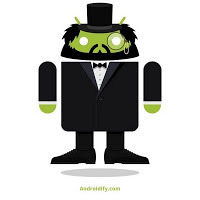
I recently got my first Android phone, and therefore have obviously been spending quite a while recently setting it up to best suit my tastes and requirements. Naturally, this meant quite a bit of working out which Android features, apps and widgets are particularly well-suited to a writer's life, and so I thought I'd post my findings in this 'ere blog in case any other Android-using writers find one of my recommendations helpful; or indeed if any of you can recommend something I haven't yet discovered!
First of all, I love the 'scenes' feature in Android OS, even if I dislike the name and think 'modes' would have been more explanatory. For those who aren't familiar with the concept of scenes/modes, think of it this way - you know how, if you choose, you can have more than one account set up on your computer, allowing different desktops with different program shortcuts and whatnot for each member of the family, or you in work and leisure modes? Scenes are essentially that - you set each one up with a different background image (if you like), and different apps and widgets displayed on the home screens for easy access depending on what you're most likely to need when you're in that mode (see why my name's better?), although you can still access all your other stuff as well without changing scenes by going into the 'all apps' page. So, for example, my personal 'scene' is for when I'm in leisure mode, and has things like my social networking stuff and music player and gallery of photos and whatnot; while my writing 'scene' is dedicated almost exclusively to productivity apps. (There are some apps and widgets which appear on both my scenes as they have more than one purpose, but you get the idea.) So, for this post, I'm going to be talking about some of the features which appear in my phone's writing 'scene'.
But before I begin, I should just say a word about the funny little codes which appear below, just in case you're even less tech-savvy than I am (I didn't know what they were until a week or so ago, so you learn something new every day!) - if you're an Android user and want to try out any of the apps which appear below with one of these QR codes, then make sure you have a barcode-scanning app (like Barcode Scanner or RedLaser) installed on your phone, and then use that app to scan the code using your camera's inbuilt scanner. Presto - the Android Market opens on your phone, at the page for the app you're interested in! If you don't want to do it that way, just click any links I've provided or search Market yourselves.
So, what have I found particularly useful writing-wise?
Documents To Go
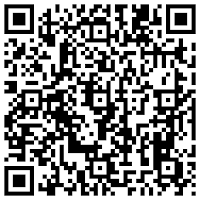 A pretty obvious place to start - surely one of the best things about smartphones for writers is that you can use them to store and sometimes edit your documents? Docs To Go is the office app you see recommended by pretty much every Android book, site and magazine, and after experimenting with a few before settling on DTG, I've come to the conclusion that this is for a good reason. Docs To Go allows you, while your phone's coupled up to your computer, to drag files across so that once the phone is disconnected, said files can be opened and read on your phone. The basic app (the free one you download first) supports Word, Excel and PowerPoint files, which means it supports the equivalent files in my productivity suite of choice, OpenOffice, as well, so if you're not a Microsoft person there's no problem there. The add-on key which can also be purchased from the Market (and is currently on something like a 50% discount) allows you (among other things) to work with PDFs too, as well as editing and creating new documents from the phone. Significantly for authors of books, tests I conducted with the behemoth-sized file of my most recently completed book didn't present me with any problems, which reflects well on DTG as many office-type apps do struggle with large documents (some even say so in their descriptions in the Market). Very happy with this app.
A pretty obvious place to start - surely one of the best things about smartphones for writers is that you can use them to store and sometimes edit your documents? Docs To Go is the office app you see recommended by pretty much every Android book, site and magazine, and after experimenting with a few before settling on DTG, I've come to the conclusion that this is for a good reason. Docs To Go allows you, while your phone's coupled up to your computer, to drag files across so that once the phone is disconnected, said files can be opened and read on your phone. The basic app (the free one you download first) supports Word, Excel and PowerPoint files, which means it supports the equivalent files in my productivity suite of choice, OpenOffice, as well, so if you're not a Microsoft person there's no problem there. The add-on key which can also be purchased from the Market (and is currently on something like a 50% discount) allows you (among other things) to work with PDFs too, as well as editing and creating new documents from the phone. Significantly for authors of books, tests I conducted with the behemoth-sized file of my most recently completed book didn't present me with any problems, which reflects well on DTG as many office-type apps do struggle with large documents (some even say so in their descriptions in the Market). Very happy with this app.Movable to SD card? Yes.
Desktop companion available? Not strictly speaking, unless you count your office suite with which it's sharing documents!
Catch Notes
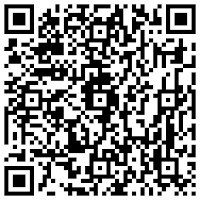 Is it a diary? Is it a scrapbook? Is it a research aid? It's all those things and more, and it bloody rules. A companion to the web-based Catch website, you don't need to have signed up with the site to use the Catch app, but I highly recommend doing so - for starters, it provides a backup and allows you to update from your computer as well as your phone. So what can you do with the phone app itself? Among other things, create text notes, photo notes, voice notes, alerts, record your location when a note was created (that is optional, I hasten to add), scan barcodes and QR codes (assuming you have a scanner app) and save the resulting info in your Catch archives (spotted a book that might be helpful for research but not sure where to buy it or what the best price is? Catch will save the book's title and author info along with the best price it could find.)...you get the idea. There's a lot going on in there. Notes can be tagged to enable easy searching by subject, and you have the option of placing a widget on your home screen for speedy updating. You can PIN-protect the app to keep your notes private, and none of them are visible to others unless you choose to share them via email, Facebook or Twitter. The app is free and allows you to save 70MB's work of stuff in a month, but if you subscribe to Catch via the site, for a monthly fee you get 1GB a month and support for productivity documents. Personally, I'm finding the free version more than ample! Great for keeping a diary of the writing process, saving useful articles, documenting research trips and finding suitable books...and that's just what I'm using it for in a professional capacity, and I'm sure there are more things I haven't thought of yet.
Is it a diary? Is it a scrapbook? Is it a research aid? It's all those things and more, and it bloody rules. A companion to the web-based Catch website, you don't need to have signed up with the site to use the Catch app, but I highly recommend doing so - for starters, it provides a backup and allows you to update from your computer as well as your phone. So what can you do with the phone app itself? Among other things, create text notes, photo notes, voice notes, alerts, record your location when a note was created (that is optional, I hasten to add), scan barcodes and QR codes (assuming you have a scanner app) and save the resulting info in your Catch archives (spotted a book that might be helpful for research but not sure where to buy it or what the best price is? Catch will save the book's title and author info along with the best price it could find.)...you get the idea. There's a lot going on in there. Notes can be tagged to enable easy searching by subject, and you have the option of placing a widget on your home screen for speedy updating. You can PIN-protect the app to keep your notes private, and none of them are visible to others unless you choose to share them via email, Facebook or Twitter. The app is free and allows you to save 70MB's work of stuff in a month, but if you subscribe to Catch via the site, for a monthly fee you get 1GB a month and support for productivity documents. Personally, I'm finding the free version more than ample! Great for keeping a diary of the writing process, saving useful articles, documenting research trips and finding suitable books...and that's just what I'm using it for in a professional capacity, and I'm sure there are more things I haven't thought of yet.Movable to SD card? Yes, but if you do, the built-in homescreen widget (if you choose to use it) won't work. Nil desperandum - Catch have made the widget available separately and it's a much smaller file than the app, so if you want to save space in the phone's internal memory, move the app itself to the SD card and have the separate widget in the phone itself so you can have it on the home screen. I do this and it works perfectly.
Desktop companion available? There's the site itself, of course, and a few add-ons for various web browsers, which I haven't tried out as the Firefox one isn't compatible with the version of Firefox I'm running. Catch say that a proper desktop program is in the works.
Read It Later
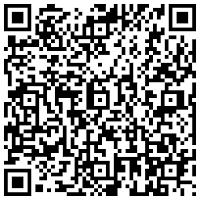 A companion to your Read It Later web account, the RIL app allows offline reading of articles you've previously added to your reading list to save for later. Say you're browsing online on your computer and see an article which could be useful later - you'd add it to your reading list (using the special browser button you get when you sign up to your online account), the article would be saved and wirelessly synced to your list on your phone as well, and then you can read it at your leisure, even if you don't have internet access at that time.
A companion to your Read It Later web account, the RIL app allows offline reading of articles you've previously added to your reading list to save for later. Say you're browsing online on your computer and see an article which could be useful later - you'd add it to your reading list (using the special browser button you get when you sign up to your online account), the article would be saved and wirelessly synced to your list on your phone as well, and then you can read it at your leisure, even if you don't have internet access at that time.Movable to SD card? Annoyingly no, at least not at the time of writing.
Desktop companion available? Works with the RIL website, which puts special buttons onto your web browser for saving articles. Add-ons are also available for certain browsers.
Astrid
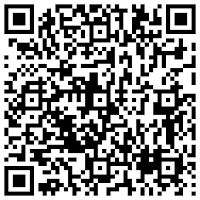 Astrid is an octopus/squid-type creature who grins at you from the top of your to-do list. The Astrid app gives you the option of placing your to-do list on your home screen in the form of a widget, and tapping it (or just entering the app in the normal manner) will take you to your full-sized list, where you can add tasks, tag them, set deadlines and alerts and label them in order of urgency, and tick them off as completed, at which point they'll disappear from your list display. If a deadline is set for a task, Astrid will alert you when it's time to start, and if the task becomes overdue, she'll gently prod you into doing it. ("You'll feel better!" "How about a snack afterwards?") If you find these encouragements annoying they can be disabled in the settings, leaving you with the bog-standard alerts, but personally I like having a friendly cephalopod acting as my conscience. One of the great things about the widget, I've discovered, is that you can configure it to display differently in your different 'scenes' - in my personal mode, for example, Astrid shows all my to-do tasks, while in my writing mode only the ones I've tagged 'writing' are visible, meaning I don't have to wade through reminders to buy hair dye or defrost tofu when I'm busy working. Good for keeping note of the next few scenes you're due to write, or reminding you to call your agent or attend to an editor's queries.
Astrid is an octopus/squid-type creature who grins at you from the top of your to-do list. The Astrid app gives you the option of placing your to-do list on your home screen in the form of a widget, and tapping it (or just entering the app in the normal manner) will take you to your full-sized list, where you can add tasks, tag them, set deadlines and alerts and label them in order of urgency, and tick them off as completed, at which point they'll disappear from your list display. If a deadline is set for a task, Astrid will alert you when it's time to start, and if the task becomes overdue, she'll gently prod you into doing it. ("You'll feel better!" "How about a snack afterwards?") If you find these encouragements annoying they can be disabled in the settings, leaving you with the bog-standard alerts, but personally I like having a friendly cephalopod acting as my conscience. One of the great things about the widget, I've discovered, is that you can configure it to display differently in your different 'scenes' - in my personal mode, for example, Astrid shows all my to-do tasks, while in my writing mode only the ones I've tagged 'writing' are visible, meaning I don't have to wade through reminders to buy hair dye or defrost tofu when I'm busy working. Good for keeping note of the next few scenes you're due to write, or reminding you to call your agent or attend to an editor's queries.Movable to SD card? No, but then if you're a widget user (which makes life much easier), you wouldn't be able to have that and the ability to move to SD anyway.
Desktop companion available? Not as such, although you can sign up for an online account and share your (private by default) tasks using social networking media.
TweetCaster
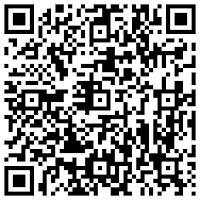 I know, I know - not strictly writing-related, and if you're the undisciplined sort I can see how you might get distracted messing about on Twitter when you should be writing. However, I'm going to assume here that a) you do have the necessary self-control, and b) part of your online presence as a writer involves having an account on Twitter. (And if you do and you haven't started following me @fayelbooth yet, why not, hmm?!) TweetCaster is definitely my favourite Android Twitter app, allowing you to juggle multiple accounts and colour-code your own tweets and those others make which mention you so that they stand out. You can simultaneously post to Facebook using the app as well, and receive notifications when someone @replies you, mentions you or sends you a message; and you can do all the usual stuff like retweeting, searching and whatnot. Finally, the app icon on your home screen is awesome - an ickle bog-eyed bird!
I know, I know - not strictly writing-related, and if you're the undisciplined sort I can see how you might get distracted messing about on Twitter when you should be writing. However, I'm going to assume here that a) you do have the necessary self-control, and b) part of your online presence as a writer involves having an account on Twitter. (And if you do and you haven't started following me @fayelbooth yet, why not, hmm?!) TweetCaster is definitely my favourite Android Twitter app, allowing you to juggle multiple accounts and colour-code your own tweets and those others make which mention you so that they stand out. You can simultaneously post to Facebook using the app as well, and receive notifications when someone @replies you, mentions you or sends you a message; and you can do all the usual stuff like retweeting, searching and whatnot. Finally, the app icon on your home screen is awesome - an ickle bog-eyed bird!Movable to SD card? No.
Desktop companion available? No, which annoys me as it'd be nice to be able to sync tweets between my computer and phone. Have suggested it to the developer - hope they're feeling obliging!
Bloggeroid
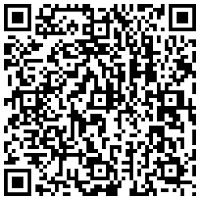 Again, this one's obviously more to do with promoting yourself as a writer, and if you use another blogging service for your author blog you'll obviously want to look for something for that, but since fayelbooth.co.uk lives on Blogger, here I am talking about Bloggeroid. So this is obviously for updating your blog - you can create and edit blog posts and comments, post pictures and format text with bolding and italics and whatnot. I thought about using it to write this post, but decided that as it's so long I'd get it done faster on my computer!
Again, this one's obviously more to do with promoting yourself as a writer, and if you use another blogging service for your author blog you'll obviously want to look for something for that, but since fayelbooth.co.uk lives on Blogger, here I am talking about Bloggeroid. So this is obviously for updating your blog - you can create and edit blog posts and comments, post pictures and format text with bolding and italics and whatnot. I thought about using it to write this post, but decided that as it's so long I'd get it done faster on my computer!Movable to SD card? Yes.
Desktop companion available? Blogger, obviously.
So that's the stuff you have to download, now what about what's already on the phone when you get it? There are a few great features in there too which can enrich your writing 'scene'. (No QR codes for these as, being pre-installed software, they're not on the Market.)
Quick Look
This is a small slice of genius - input a search item and you can tab between Google, Wikipedia, YouTube, Google Dictionary and Google Translate to look at what each of the sites has to offer on the subject. Of course, if you want a more feature-rich Wikipedia app, say (perhaps one that allows bookmarking of articles), you'll have to get a separate one; and likewise the Google Dictionary tab is dependent on an internet connection (I am looking at offline dictionary apps, but I haven't found one I really like yet), but Quick Look is a great all-rounder, minus the bells and whistles.
Movable to SD card? As with all pre-installed software, no.
Desktop companion available? Depends which site/tab you mean!
Google search bar widget
You should find this in your list of addable widgets, and it does what you'd expect it to do - puts a Google search bar on your home screen so you can search straight from there. If you're the easily distracted type, I suppose it could also go some way towards keeping you from messing about on Facebook during a writing session: don't have any social networking apps or the web browser on your writing 'scene' home screen, and just keep the Google bar there for if you need to look something up quickly. Same goes for Quick Look.
Movable to SD card? Again, no (partly because it's a widget and partly because it's pre-installed).
Desktop companion available? It's Google!
People widget
This may have a different name depending on your phone's manufacturer, but either way I'm sure you'll recognise it - this widget is the Android equivalent of the 'favourite numbers' list you get on most phones which allow speedy calling of those you want to be able to access quickly. The good thing about the Android 'scenes' system is that you can have a different favourites list for each mode - my personal one obviously has family and friends, while my writing People widget has numbers like my local library, my agent and the Society of Authors.
*
So those are my early tips for making Android work for you as a writer - if I've missed any juicy ones, please do let me know and perhaps one day I'll have enough for a second instalment! By the way, in case anyone was wondering, the Victorian Android logo at the top of this post was made using Google's Androidify app. Useless but fun, it allows you to adapt the green robot logo to look like yourself or someone else - this is me:
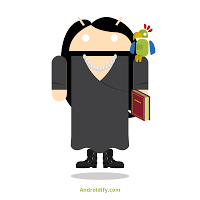
Published on July 21, 2011 00:44
June 25, 2011
Interviews: the best of
A selection of my favourite interviews and guest posts. Waffling ahoy!
June 2011: The Victorianist
'I love the characterisation in Jude the Obscure. Little Time is a lot like me as a child (which is a bit worrying, really!).'
March 2011: Dear Author
'So [Henry Shadwell from Trades of the Flesh is] a contradiction, really, which makes him feel real and alive for me, and it's hard to pigeonhole him as either fitting the classic image of the Victorian man or being more modern – like most people in most times, he's a mixture of good and bad qualities.'
November 2010: MNWers blog
'I think my Muse wears a waistcoat and top hat and carries a cane. At least, I like to think so.'
April 2010: Normblog writer's choice
'On her way home, [Fanny Stanton of Penelope Lively's Fanny and the Monsters] watches her Aunt Caroline struggling to fit the voluminous skirts of her widow's weeds through the door of the train, noting that she seems 'equally ill-adapted to the world' as the dinosaurs, and Fanny ponders whether Aunt Caroline and women like her are also heading for extinction. But the world is not yet sufficiently in sympathy with Fanny's progressive views as to allow her clemency when she raises the subject of evolution at the dinner table...'
October 2009: Preston Writing Network
'I was a toddler when I saw a cartoon adaptation of The Hobbit, and I zeroed in on the character you'd probably expect to be frightening for a small child - Gollum. I promptly named skeletons "Smeagols", and I was fascinated with them too. (The skeletons in Funnybones were Smeagols to me thereafter.) I read a lot of children's books with witches in them, and despite being a child myself, I was just as enthralled with Roald Dahl's monstrous, child-hating Grand High Witch as I was with friendly witchy protagonists like Meg (of Meg and Mog) and Heggerty Haggerty. As I grew into adolescence, I made my mark in my English coursework by "sympathising with the devil"; looking at the story from the point of view of the characters that were presented to us as villains or antagonists.'
September 2009: Madame Guillotine
'"Oh, I'm a seduced milliner – anything you like." That was the rather cynical and dismissive response Victorian prostitute 'Lushing Loo' gave the sociologist Henry Mayhew when he asked her how she had ended up in her profession, and who can blame her? Whether out of genuine social concern, voyeurism or a penchant for poverty tourism, a number of Learned Men of the period, from Mayhew to Charles Booth (no relation to me, at least as far as I'm aware), did seem to enjoy cornering prostitutes in pubs and quizzing them about their lifestyles, which I imagine caused no end of irritation to those who were busy trying to catch a little trade and/or drink themselves silly. Lushing Loo, Mayhew tells us, went on to treat him to a soused rendition of one of her favourite songs – oh, to have been a fly on the wall!'
September 2009: MNWers blog
'I can't understand why we have such a double standard where stereotyping is concerned: if an author were to write a contemporary novel populated with cookie-cutter characters taken from lazy stereotypes of groups of people (based on age, sex, race, sexual orientation, nationality or whatever), any decent editor or agent would quite rightly pull them up on it during the edit or reject the book outright, but when the group of people in question are those who lived at a certain time, it's widely accepted and even expected.'
September 2009: Nik Perring's blog
'I think I avoided one of the common struggles of writers working on their second novels, a lot of whom reportedly find, if they begin writing Book Two after Book One has been published or accepted for publication, that they are consumed with performance anxiety – that "dance as if there's nobody looking" situation no longer applies, and the author is left wondering: will Those In Power like their second novel as much as they liked their first, or will they hear those words that are dreaded by artists of all stripes: "I prefer your older work to your newer work"?'
June 2011: The Victorianist
'I love the characterisation in Jude the Obscure. Little Time is a lot like me as a child (which is a bit worrying, really!).'
March 2011: Dear Author
'So [Henry Shadwell from Trades of the Flesh is] a contradiction, really, which makes him feel real and alive for me, and it's hard to pigeonhole him as either fitting the classic image of the Victorian man or being more modern – like most people in most times, he's a mixture of good and bad qualities.'
November 2010: MNWers blog
'I think my Muse wears a waistcoat and top hat and carries a cane. At least, I like to think so.'
April 2010: Normblog writer's choice
'On her way home, [Fanny Stanton of Penelope Lively's Fanny and the Monsters] watches her Aunt Caroline struggling to fit the voluminous skirts of her widow's weeds through the door of the train, noting that she seems 'equally ill-adapted to the world' as the dinosaurs, and Fanny ponders whether Aunt Caroline and women like her are also heading for extinction. But the world is not yet sufficiently in sympathy with Fanny's progressive views as to allow her clemency when she raises the subject of evolution at the dinner table...'
October 2009: Preston Writing Network
'I was a toddler when I saw a cartoon adaptation of The Hobbit, and I zeroed in on the character you'd probably expect to be frightening for a small child - Gollum. I promptly named skeletons "Smeagols", and I was fascinated with them too. (The skeletons in Funnybones were Smeagols to me thereafter.) I read a lot of children's books with witches in them, and despite being a child myself, I was just as enthralled with Roald Dahl's monstrous, child-hating Grand High Witch as I was with friendly witchy protagonists like Meg (of Meg and Mog) and Heggerty Haggerty. As I grew into adolescence, I made my mark in my English coursework by "sympathising with the devil"; looking at the story from the point of view of the characters that were presented to us as villains or antagonists.'
September 2009: Madame Guillotine
'"Oh, I'm a seduced milliner – anything you like." That was the rather cynical and dismissive response Victorian prostitute 'Lushing Loo' gave the sociologist Henry Mayhew when he asked her how she had ended up in her profession, and who can blame her? Whether out of genuine social concern, voyeurism or a penchant for poverty tourism, a number of Learned Men of the period, from Mayhew to Charles Booth (no relation to me, at least as far as I'm aware), did seem to enjoy cornering prostitutes in pubs and quizzing them about their lifestyles, which I imagine caused no end of irritation to those who were busy trying to catch a little trade and/or drink themselves silly. Lushing Loo, Mayhew tells us, went on to treat him to a soused rendition of one of her favourite songs – oh, to have been a fly on the wall!'
September 2009: MNWers blog
'I can't understand why we have such a double standard where stereotyping is concerned: if an author were to write a contemporary novel populated with cookie-cutter characters taken from lazy stereotypes of groups of people (based on age, sex, race, sexual orientation, nationality or whatever), any decent editor or agent would quite rightly pull them up on it during the edit or reject the book outright, but when the group of people in question are those who lived at a certain time, it's widely accepted and even expected.'
September 2009: Nik Perring's blog
'I think I avoided one of the common struggles of writers working on their second novels, a lot of whom reportedly find, if they begin writing Book Two after Book One has been published or accepted for publication, that they are consumed with performance anxiety – that "dance as if there's nobody looking" situation no longer applies, and the author is left wondering: will Those In Power like their second novel as much as they liked their first, or will they hear those words that are dreaded by artists of all stripes: "I prefer your older work to your newer work"?'
Published on June 25, 2011 07:13
Uptight Victorian bitch
I was just buying cushions in Dunelm Mill and spotted these. I love them and so should you!
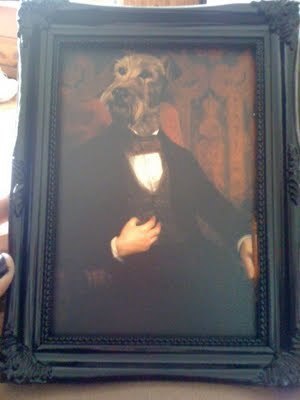
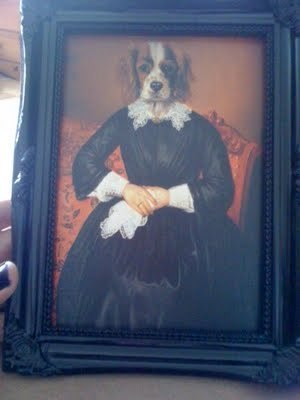
Excuse the dodgy mobile photos, but you get the idea. How cool are those? And only £2.50 each too - I'm well chuffed with them. They are also, it's worth mentioning, more Victorian (as opposed to modern-twist-on-Victorian) than you might at first think. Despite the disapproval faced in his time by Charles Darwin for suggesting the fairly obvious, the Victorians were pretty keen on portraying themselves as animals - the period gave rise to many different artistic depictions of creatures with human bodies and animal heads* (and occasionally vice versa), or beasts in human clothing doing human things; and on the nastier side there were the taxidermied displays of people like Walter Potter, who became known for his pieces featuring stuffed animals in human contexts, such as kittens getting married and guinea pigs playing cricket. Personally, I think the whole dead animal thing negates any cute whimsy Potter's work might have had, but he was a product of his time, I suppose. (Don't think he didn't get complaints from his contemporaries, though - he did. The RSPCA was a Victorian creation, you know.)
Anyway, those are my new dogpeople. I love them quite unashamedly.
* Indeed, anthropomorphic artwork such as this predates the 19th century by a long way - look at the human/animal gods of ancient Egypt, figures like the Greek man-goat Pan, and the so-common-you-almost-miss-them human/animals like mermaids. Something in us has always wanted to pay tribute to our primal nature.


Excuse the dodgy mobile photos, but you get the idea. How cool are those? And only £2.50 each too - I'm well chuffed with them. They are also, it's worth mentioning, more Victorian (as opposed to modern-twist-on-Victorian) than you might at first think. Despite the disapproval faced in his time by Charles Darwin for suggesting the fairly obvious, the Victorians were pretty keen on portraying themselves as animals - the period gave rise to many different artistic depictions of creatures with human bodies and animal heads* (and occasionally vice versa), or beasts in human clothing doing human things; and on the nastier side there were the taxidermied displays of people like Walter Potter, who became known for his pieces featuring stuffed animals in human contexts, such as kittens getting married and guinea pigs playing cricket. Personally, I think the whole dead animal thing negates any cute whimsy Potter's work might have had, but he was a product of his time, I suppose. (Don't think he didn't get complaints from his contemporaries, though - he did. The RSPCA was a Victorian creation, you know.)
Anyway, those are my new dogpeople. I love them quite unashamedly.
* Indeed, anthropomorphic artwork such as this predates the 19th century by a long way - look at the human/animal gods of ancient Egypt, figures like the Greek man-goat Pan, and the so-common-you-almost-miss-them human/animals like mermaids. Something in us has always wanted to pay tribute to our primal nature.
Published on June 25, 2011 06:35
June 24, 2011
Interview on The Victorianist blog
Just a note to say that I and a few other authors of Victorian-themed fiction and non-fiction have just had interviews posted over on The Victorianist - check it out if thus inclined!
Published on June 24, 2011 08:31
June 22, 2011
Form an orderly queue
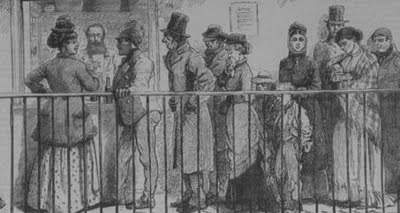
Confession: I'm not good in crowds, especially if I have to hold conversations with them. I always think that the exchange of talking to an individual and listening to what they have to say is a bit like throwing a tennis ball back and forth between you, and so holding a conversation with multiple people gets interesting as you have to field multiple tennis balls, adding one more for each new person joining in.
Now what, I hear you ask, does this have to do with writing? Well, over the past few years and in the process of writing several books with varying numbers of protagonists, I've come to the realisation that the tennis ball thing doesn't change just because the people I'm paying attention to are imaginary.
My first two novels (available from nice booksellers now and all that) didn't have this problem as they only had one protagonist each. The third novel I wrote (which may possibly appear at some point in the future in some form) had two, and writing it was hell. I never felt as if I was getting into 'the zone', so I spent however many months trudging through at a slower pace, convinced that I wasn't going to like the finished product. But when I came to read through it again at the start of the redrafting process, I was pleasantly surprised - I liked it a lot, and so I couldn't imagine what had made the process of writing it so difficult.
The next novel I completed was a one-protagonist disaster which I am determined will not see the light of day; and then came the behemoth: my lengthiest and most recently completed book which is now in the capable mitts of my agent and on submissions. That book has five protagonists, and to begin with, writing it was mind-boggling. There was, at one point, another reason for that which isn't related to the subject of this post; but even once that was past, I still struggled to stand in the centre of the circle my protagonists were forming, spinning around at the right moment and for the right length of time to catch the tennis balls they were throwing at me. It was maddening because I had an intimate understanding of these characters and the plot before I began; I knew what was going to happen in the book and had even written a condensed guide to it for my agent, so why the hell was I struggling so much?
Then I had an epiphany - I would write the central protagonist's scenes first (she was always going to get to the head of the queue; she's high-maintenance like that), from beginning to end without interruption; then begin work on the next character's story thread. Repeat the process for each of the five protagonists, then chop them up into chapters and shuffle the order until everything's in place. It sounded a bit scatty, but I was at my wit's end and figured it was worth a try. It certainly was - it worked so ridiculously well, it was as quick, easy and effective as switching on a light. I'd probably still be writing that book now if I hadn't done that.
So, the WIP. A smaller number of protagonists this time than I had then - just two now - but I still started out attempting to write both characters' scenes at the same time. It was like writing my third novel again, so now I'm doing what I did with the behemoth and taking them one at a time, and I don't want to speak too soon, but it seems to be working! I think I've worked out what my problem was when I was writing the third book, and if you find that writing multiple POVs at once confuses you, it might be worth you trying this tactic as well. It's a lot more fun than being pelted with tennis balls.
Published on June 22, 2011 02:54
Faye L. Booth's Blog
- Faye L. Booth's profile
- 10 followers
Faye L. Booth isn't a Goodreads Author
(yet),
but they
do have a blog,
so here are some recent posts imported from
their feed.



